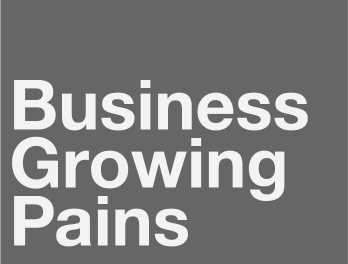
Dr Peter Ellis
WHAT ARE THOSE STAGES?
In the realm of private sector enterprises, owner-managers sometimes makes plans to grow, but unforeseen things happen, such as supply or demand issues, HR issues, or other organisational issues that eventually cause cash-flow problems. Other-times growth comes from increased marketing and sales, but falters when the growth cannot be controlled. Sometimes growth comes through acquisition which may or may not be able to be managed.
After years of research and collaboration with small and medium sized businesses, we can see the pain that business owners have relying on the usual ‘one-size-fits-all’ advice and not truly knowing whether their decisions are sound.
Have you ever felt that there is some knowledge you are missing you don’t have as much control or understanding of the management of your business as you would like to?
If you have a medium sized business, then you will be able to add valuable insight to stakeholders and or support internal strategy by understanding the management of a medium enterprise, making you a visibly knowledgeable asset in your company.
To date, business sizes related to turnover and the number of employees However by that criteria, a small construction company is larger than a medium sized retail outlet. At no time have private sector businesses been able to be managed, structured and organised by the stage in which they are, or through which stage they are transitioning . . . until now.
Our clients no longer have to guess what decisions to make and the areas in which activities either by them or managers must be put in place.
Most clients think that it is solely finding new customers or having qualified employees. They cannot understand why the business is not running smoothly, or profitably. BGP explains in this section why this is the case.
The more that this is understood, the easier it is to reach your level of business desire or ability.
Who will this information help?
Do they want to keep their business stable for the long-term, or do they want improve or grow their business and by how much.
Very few private sector owners who are growing their business have the knowledge and experience regarding the managerial skills required and internal structural workings for each size of a business.
This knowledge is required to make positive business decisions to either keep a business stable or organise the growth of a company. This article is for business owners who are not sole traders, but have staff to manage or departments to organise.


How can you leverage this to grow your business?
Unless they have access to people that have had the same experience and have moved to the next stage, they will not be in a position to grow further. Indeed, many businesses flounder as they pass the limit of their owner’s business knowledge, the actual boundary beyond which they have never speculated, or even known that there was any speculation to be done. As a business transitions from one size to another, management must learn completely new mindsets and skills, in line with the different size of the business.
BGP will provide a simple and easy to overview of how to understand and develop the combination of skills at the right time as the firm develops to take control and keep growing.
The Theory
What skills does a small enterprise need in addition to those of a micro enterprise?
- When growing from a micro enterprise to a small firm, the difference in skills and organisational structure are not that great, but if not done properly, could cause all sorts of stress and problems.
- Moving from a micro enterprise to a small one is not just getting more staff or increasing sales.
- The key element is putting systems and processes in place that all employees understand.
- Getting new professional or production staff, without both parties knowing in advance what is expected, will always lead to lower performance than is required. This must be set out and agreed, never just assumed!
The staff of a small company need to know what is expected of them. Itr is not acceptable for them to just given a position with the hope that the experience of their past will fulfill all the needs of the current employer.
- The reason that the half of the small enterprises are not as profitable as they could be, is that the owner-manager is busy doing their work and assigns the management to a practice manager / bookkeeper, who does not have the authority, knowledge or experience to know how to run the business profitably.
- BGP will explain in simple terms what is necessary and provide the tools to do the job. That is to control the transition of the enterprise into a profitable small enterprise and show the owner how to transition further.
As an enterprise becomes established at a small size, systems are introduced, whether written or not and whether there was a practice manager, or it was managed by the owner-manager. Those owners that became more of a manager than a colleague, were better able to plan their activities. Some enterprises may struggle to incorporate systems and take longer to transition than others. The sooner systems are put in place, the easier it is to have a well-structured enterprise. Where an enterprise is less structured, the longer the systems take to implement and it is harder to manage and less profitable. Some small enterprises never incorporate systems and for that reason will remain in a transitional state for the entire life of the enterprise.
Currently, only about half of entrepreneurs developing small enterprises document their future plans. Documentation is generally carried out where required by law, or from the owner’s previous management experience. Organisational issues that are resolved solely by micro management or ad hoc decision-making practices prevent growth and ‘letting go’ of micro management is essential, using key performance indicators (KPIs) will have positive results from that structure. Owners that totally abdicated the work to the practice manager or bookkeeper, will not have personal control of the direction of the enterprise and therefore are unlikely to develop significantly.
A situation found in small businesses.
A number of professional practitioners, with whom we have worked have chosen to build their business from sole practitioner to one with a number of practitioners. In each case, they employed an administrative section and a number of professional practitioners.
The agreement with the practitioners was that they would receive a certain about of wages or a salary dependent on their experience. Alternatively, they would pay per hour, or percentage of their income for the use of the room or space they used.
The problem with this arrangement, was that no expectation with regard to the income they brought to the firm was agreed. In no case did they produce the expected income as this was never discussed, agreed or trained for.
The owner had no contract regarding the expectations of the employees and just assumed they would work as hard and produce the income that the owner was able to achieve.
BGP assists the owner to put all these in place in a reasonable and acceptable manner to change the business from less than profitable to fully profitable.
What skills and organisational changes are necessary when growing from a small enterprise to a medium-sized enterprise?
- To transition out of a small enterprise successfully, is not simply to employ more staff, or separate staff into separate groups.
- To do this in a manner that is manageable and sustainable, the change must be planned, and the skills of the owner-manager increased to cover planning and finance. This must be done before starting to change the structure of the company.
- To be able to manage the transition, the firm must organise different sections broken into departments. It is necessary to understand what each department is to do and plan as to who will manage them and how they will interact with each other.
- At this time, dependent on the industry and size of the enterprise, managing each department is the task of the owner, a general manager or a department manager.
- In order to manager the organisation, individuals are no longer able to decide their own fate, but a central organisational management will be formed.
- Developing a brand, building an identity and changing the focus of the activities will be explained in detail by BGP
Situations found by medium enterprises
As owner-managers grow their enterprise, they begin to understand that to become successful, they must fully “let go” of their micro management control to become an administrator rather than a technician or helpful colleague. At this stage, entrepreneurs know that if they are to establish a stable organisation, they require a collaborative management structure. In that structure, they organised the day-to-day management of the departmental activities through managers or a general manager, with whom they have regular weekly or monthly meetings. They were then able to personally focus on financial, HR and risk management activities.
As a medium-sized enterprise, the owner-managers’ focus grows, and they are not fixed to delivering a service or working in a localised area, but generally become branded and expanded state-wide, nationally or internationally. In order to do this, they develop new beneficial organisational skills which they learn from peers, books or taking business courses. They especially learn the strategy to transition through departmentalising, together with time and people management.
Business Growing Pains (BGP) specialises in clarifying the activities necessary for enterprises to develop and have sustained management activities.
An entrepreneur took the management of an overseas corporation and began to build up the sales for Victoria. Over 20 years, he began with no sales and through personal hard work, built the company to cover the whole state. As they had not formal management training, they managed all areas of the business themselves from one location. The turnover had increased from zero to $25 million with up to 30 staff. All staff were answerable to him and the departments were merged with no written processes or procedures.
In the last five years, a new firm set up in Queensland, also affiliated to the international company, and began growing aggressively. They had processes and procedures, separate departments and an aggressive plan to take over the sales throughout Australia.
The owner of the Victorian company would not or could change their system or mode of work and the new, well structured organisation took over all of Australia without breaking its stride as the first firm folded with no systems either for management of as a means of moving forward.
The problem of the original firm was that once an enterprise grows beyond the small size, it must be organised or will fail. This situation is more common than is realised and in fact over half of private sector enterprises that are growing or want to grow, are stuck in this limbo. GBP specialises in resolving this issue!

Breaking down the steps.
Below is an overview of what you will need to do in order to understand, organize and take control of your business
To understand what is required.
- First it is necessary to appreciate that at each transitional stage, a different mind-set and set of management skills are required to either participate successfully in the new size, or commence the transition to the next stage of growth.
- Second each stage requires specific management skills to control the organisational structure required to be in place at that stage.
- Third, for a firm to transition and in order for it to have the right foundation on which to establish its structure, each size has a different set of processes and procedures.
- Finally if the enterprise is to grow, the owner must understand how to ‘let go’ of the restrictive micro-management that was essential for the initial commencement of the company.
To develop each mind-set
- A micro-mindset relies on the passion, focus and attitude of the owner. It is they, whose drive and energy are required to commence the journey. This blog commences when the small percentage of owners choose to grow and what they must do.
- First to reach the second stage after micro, they must choose to increase the income of the firm through their own hard work. Once that is done the third stage commences. Here they will start looking for more income generating staff and this is where they must start to decide if those they employ are professionals who they control or train. If they only want to guide them, and not let go of total control, then whatever happens, the business growth will be limited to that mindset and will not fully transition to a small enterprise.
- If they can see a more structured operation where they control the focus and attitude but not the ability to think of the new income generators, then they may begin to put the foundations of the next size enterprise in place.
- This is more or less the same process that takes place when commencing the transition from a small enterprise to a medium one.
To put the new management skills in place
- There are three main skill areas in a private sector enterprise. Those of technical activities, management activities and personal development.
- The technical ability requirements diminish somewhat as the enterprise grows, At first as the owner they must have all the current technical knowledge. As the enterprise grows, they will employ people to have those skills and their job is to make management decisions regarding the use of the skills.
- On management ability. This has a steep learning curve when beginning with time management and understanding the elements of cash-flow management, but the real learning is as you grow. That is when the owner must learn organisation, HR management and project management. If this is not learned at the small stage, then developing departments and planning become near impossible.
- When growing a business, the one area of growth that continues throughout, is personal development. This starts with trust, moving on the business partnerships, conflict resolution and negotiating skills, followed by team development and at all times accepting personal responsibility.
How to make sure that the organisation structure is correct for each size.
- BGP can show you how to know what you need to do to not only understand but when to act.
Why are changes to the processes and procedures required
-
- Every stage of an organisation develops through the mindset and skills of the owner-manager. As that occurs, so the structure develops and to keep each stage secure, the processes and procedures is the cement that holds the bricks of the structure together..
- This program is in place to show how it must be understood, that neither transitioning into or out of small and medium enterprises happen overnight. The transition stages are in fact separate, where over half of firms in the small and medium sectors are in the transitioning stage.
- Whilst a micro enterprise is micro-managed with the owner doing virtually everything, as they begin to transition to a small enterprise, organising and controlling more staff, so the management style must also change as the owner lets go of managing every aspect and begins to take more of a management rather than colleague. The decisions are no longer one-dimensional and become more structured with processes and procedures becoming standard and the owner’s decisions slightly more removed, with staff being given more responsibilities.
- As the entity changes like a caterpillar into a butterfly, so the owner manager should no longer have to make all the decisions. As departments are formed, so a program of written processes and procedures are put in place to cover the majority of issues allowing a quality assured structure for the processes and the care of customers issues may be assured.
Recap
What does this mean for you and your business?
The key to success is forward planning. Once it is understood that enterprise growth requires a number of interim transitional stages, an entrepreneur can learn those steps through BGP
This may be done by joining a webinar program, or through individual training, depending on what is required for your business.
Remember, no matter how big or small your business, without a plan, you will be worried and stressed not knowing how you are doing.
Your Commitment to the Business and understanding the interim position in which you must transition.
It is these transitional phases that confuse and disorientate owners who are not aware what size they are and what they have to do in terms of personal and organisational growth.
A number of my clients have been in the medical and professional industries. Each time they have built their firm from a single operator to one of up to eight practitioners. The owner was busy as the senior practitioner, whether it as a dentist, accounting, legal of financial consulting firm. All were busy and had no time to organise their staff in an organised, performance based manner, and therefore while the owner worked six days a week, the others worked five or less days and between them were lucky to bring in enough income to pay the administrative staff.
These were all trapped in a transitional phase. The income was not sufficient for the owner to stop and review the organisational position and the administration manager did not have the skill, knowledge or ability to work with the owner to make a difference. The result was that they remained permanently in the ‘transitional’ phase for the entire life of the enterprise.
Another firm moved from stage to stage reaching a smooth entrance to a middle sized business in three years, whist another took over twenty years before they were able to put in place all the necessary element to be a medium sized enterprise.
Business Growing Pain is here to specifically guide through the sages of growth, through the ‘dangerous uncharted channels’ and ‘treacherous changing seas’ of the business world. A fundamental management truth is that a business cannot grow once it passes the boundary of the owner’s understanding of how a business of that size works.
Indeed, many businesses flounder as they pass the limit of their owner’s business knowledge, the actual boundary beyond which they have never speculated, or even known that there was any speculation to be done. As a business transitions from one size to another, management must learn completely new mindsets and skills, in line with the different size of the business.
Points to consider
1 What are the stages of growth?
- Micro start-up
- Transitioning out of micro
- Transitioning into small
- Small
- Transitioning out small
- Transitioning into medium
- Medium.
Each one of the above stages have different mindsets, management skills, organisational structures, processes and procedures and market support cultures. To move
It does not care about the breakdown of any legally allowed expenses, except those relating to taxes, wages or non-taxable items.
2. What does this mean
This shows you, that many businesses flounder as they pass the limit of their owner’s business knowledge. That is, the actual boundary beyond which they have never speculated, or even known that there was any speculation to be done. As a business transitions from one size to another, management must learn completely new mindsets and skills, in line with the different size of the business.
BGP has set up a matrix to show and understand exactly what is required at each stage. If you are currently unable make the necessary changes, it is not your fault, it is because there has never been a system before that understood or was able to show what had to be done, except in a one-size-fits-all method. BGP specialises in showing you how to do that.
3. Overall benefits of changing the P&L and Balance Sheet Structure
Each sized enterprise requires different management activities and structures. In order for the owner-manager to have a stable or growing enterprise, depends on how they manage the business. By having a simple financial structure, decisions are easier to make and offer a better return and result.
All businesses, no matter their size, require the chart of accounts to give the owner the information that enables then to be aware of their solvency. The problem is that 95% of businesses have their information set out in a matter to confuse them rather than aid them.
BGP training goes straight to the heart of the matter and shows how to take that pain away.
In Summary
Using the results of studies carried out by the top experts in business research, he found that each expert focussed on one area of business. Those being the abilities of the owner and the business organisation. Dr Ellis combined them into a simple matrix to be able to, not only redefine each size but show that there were two very important stages between each size that required understanding. In fact, he suggests that not understanding the interim stages was probably the main reason for business failure.

Related Articles
TOP 10 CAUSES OF BUSINESS GROWING PAINS
TOP 10 CAUSES OF BUSINESS GROWING PAINS 1. Lack of Product Market Fit - Product market fit is the relationship between your products and services and your market. It is the gauge the venture capitalists look at a prospective investment to see whether it has identified...
What is Product Market Fit & Why is it so Important?
creating a business strategy for your online business or bricks & mortar business should be similar evaluate plan and engage with experts. They can point out the holes in your strategy allowing you the room to develop it further.
Habit Creation For Business Success
Relying on motivation and passion to build your business is exhausting and unreliable. Building habits around your tasks and work output will ensure you complete what you set out to achieve.
Follow Us
Subscribe For Updates & Offers
Lorem ipsum dolor sit amet, consectetur adipiscing elit. Aenean scelerisque suscipit condimentum. Vestibulum in scelerisque eros. Fusce sed massa vel sem commodo.



It’s really a great and useful piece of information. I am glad that you shared this helpful info with us. Please keep us up to date like this. Thank you for sharing. G
Thanks again Gralion.
I appreciate your comments. Let me know what you liked about it and if there are any other Business Growth subjects that you would like me to write about?